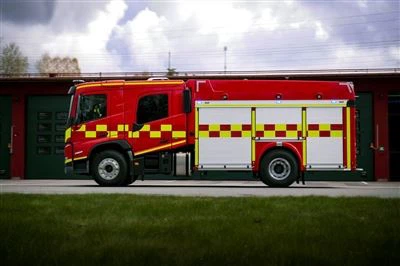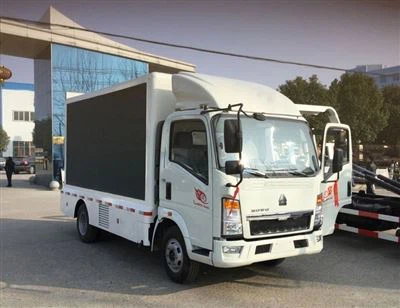Understanding Garbage Balers: Your Ultimate Guide

The growing awareness of environmental sustainability has made waste management a priority for businesses of all sizes. One of the most effective tools in modern waste management is the garbage baler. This comprehensive article will delve into what garbage balers are, how they work, the different types available, their benefits, and practical tips for choosing and using them.
What is a Garbage Baler?
A garbage baler is a machine designed to compact waste materials into dense bales. These bales are easier to transport and manage, making waste disposal more efficient. Garbage balers can be used in various settings, including grocery stores, warehouses, manufacturing plants, and recycling facilities.
Key Components of a Garbage Baler
Understanding the key components of a garbage baler can help users appreciate its functionality:
- Chamber: The primary area where the waste is placed and compressed.
- Ram: A hydraulic component that pushes the waste into the chamber.
- Baling Wire: Material used to tie the compressed waste into bales.
- Control Panel: The interface for operating the baler, typically equipped with buttons and indicators.

Types of Garbage Balers
Garbage balers come in different types to cater to various waste management needs. Understanding these types can help businesses select the right one.
Horizontal Balers
Horizontal balers compact waste horizontally. They are commonly used for large-scale operations, such as recycling and waste management facilities.
Features of Horizontal Balers:
- High capacity for processing large volumes of waste.
- Automatic feeding systems for continuous operation.
- Suitable for materials like cardboard, plastic, and paper.
Vertical Balers
Vertical balers are typically used in smaller businesses or stores. They require less floor space and are manually fed.
Features of Vertical Balers:
- Compact design suitable for limited space.
- Ideal for lower volumes of recyclable materials.
- Cost-effective for small to medium-sized businesses.
Two-Ram Balers
This type of baler utilizes two rams to improve efficiency and versatility, allowing for the compaction of multiple materials.
Features of Two-Ram Balers:

- Great for handling mixed materials.
- High production efficiency and reduced downtime.
- Can adapt to various waste streams more effectively.
Manual vs. Automatic Balers
Balers can also be classified based on their operation methods:
- Manual Balers: Require human intervention to load waste and operate.
- Automatic Balers: Use automatic systems for feeding, compressing, and tying bales.
Benefits of Using a Garbage Baler
Investing in a garbage baler provides multiple advantages for businesses:
Improved Waste Management Efficiency
Garbage balers increase the efficiency of waste handling by compacting materials into manageable bales, thus optimizing space in storage and transportation.
Cost Savings
By reducing the volume of waste, businesses can save on disposal fees and transportation costs. Additionally, selling recyclable materials can generate revenue.
Environmental Impact
Using garbage balers supports sustainability efforts by promoting recycling and reducing landfill waste. This practice contributes to a healthier planet.
Employee Safety and Workplace Cleanliness
A well-organized waste management system minimizes hazards, improving employee safety while maintaining a clean and tidy workplace.
How to Choose the Right Garbage Baler
Selecting the appropriate garbage baler for your business requires careful consideration. Here are some factors to keep in mind:
Assess your Waste Volume
Evaluate the volume and types of waste generated by your business to determine the baler’s capacity and features.
Consider Available Space
Identify the space available in your facility for the baler. Vertical balers may be more suitable for smaller areas.
Material Types
Different balers are designed for specific materials. Ensure the baler can handle the type of waste you produce.
Budget Constraints
Establish a budget that includes not only the initial costs but also ongoing maintenance and operational costs.
Proper Maintenance of Garbage Balers
Regular maintenance is crucial for ensuring the longevity and efficiency of garbage balers. Here are some essential maintenance tips:
Daily Cleaning and Inspection
Routine inspection and cleaning help prevent malfunctions. Check for any debris that could interfere with the baler’s operation.
Lubrication of Moving Parts
Regularly lubricate the hydraulic components and moving parts to minimize wear and tear, ensuring smooth operation.
Monitor Performance
Keep track of the baler’s performance and output. If you notice irregularities, address them promptly to prevent major issues.
Following Manufacturer Recommendations
Always refer to the manufacturer’s maintenance guidelines for specific instructions and schedules.
Practical Examples of Garbage Balers in Use
Understanding how businesses utilize garbage balers can provide insights into their versatility and effectiveness:
Retail Stores
Retail chains often use vertical balers to manage cardboard and plastic waste efficiently, thus creating space for inventory and contributing to recycling efforts.
Manufacturing Plants
Manufacturing facilities may implement horizontal balers to process large volumes of scrap materials, leading to significant cost savings and increased recycling efficiency.
Restaurants
Many restaurants are adopting balers to compact packaging waste, allowing for a cleaner kitchen environment and easier waste disposal.
Common Misconceptions about Garbage Balers
Misconception 1: Garbage Balers are Only for Large Businesses
While large operations benefit significantly from balers, small businesses can also improve their waste management efficiency with the right equipment.
Misconception 2: All Waste Can Be Baled
Not all waste is suitable for balers. Some materials may damage the machine or not compress well, making it essential to understand the limitations.
Cost of Garbage Balers
| Baler Type | Price Range | Typical Industries |
|---|---|---|
| Vertical Baler | $5,000 – $15,000 | Retail, Small Businesses |
| Horizontal Baler | $20,000 – $100,000 | Manufacturing, Large Recycling Plants |
| Two-Ram Baler | $25,000 – $150,000 | Mixed Materials Processing |

Frequently Asked Questions (FAQs)
1. How much space do I need for a garbage baler?
The space required depends on the type of baler. Vertical balers occupy less floor space than horizontal ones. Ensure you consider the surrounding clearance for safe operation.
2. Are garbage balers difficult to operate?
Most garbage balers are designed to be user-friendly, especially automatic models. However, basic training is recommended for safe and effective operation.
3. What types of waste can be processed with a garbage baler?
Garbage balers can handle various materials, including cardboard, paper, plastics, and certain metals. Always check the specifications for compatibility.
4. How often should I maintain my garbage baler?
Daily cleaning and inspection are crucial, while more in-depth maintenance should follow the manufacturer’s guidelines, typically on a monthly or quarterly basis.
5. Can I rent a garbage baler instead of buying one?
Yes, many companies offer rental options for garbage balers, allowing businesses to utilize them without the significant upfront investment.
6. What should I do if my baler breaks down?
If a baler malfunction occurs, stop using the machine immediately and consult the manufacturer’s service manual or contact a professional technician for repairs.
